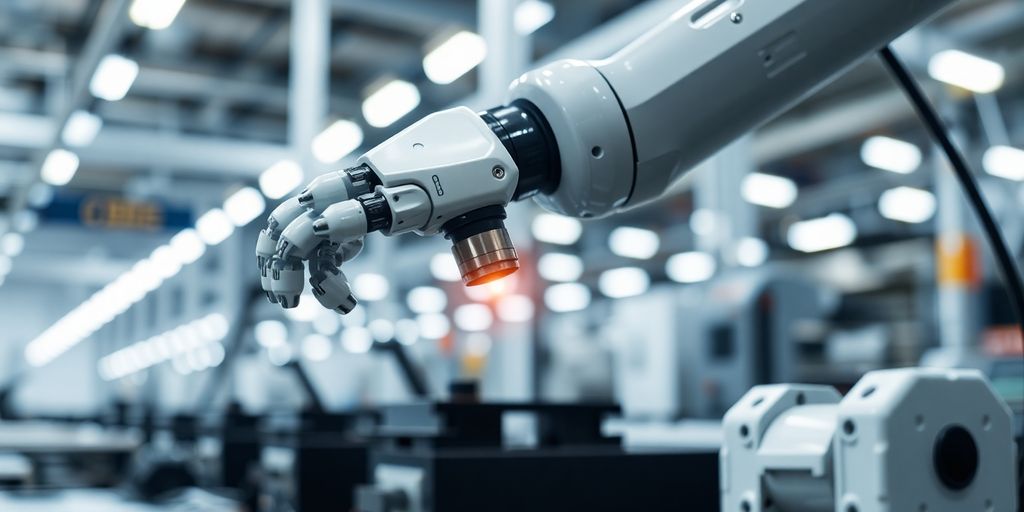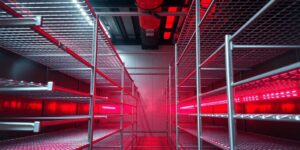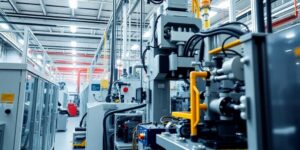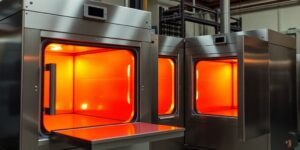So, you’re a manufacturer, right? And you’re trying to figure out if you should stick with the usual, off-the-shelf equipment or go all-in on something custom-made for your production line. It’s a big question, especially when it comes to finishing lines. Everyone wants to save money and get better results, but sometimes spending a bit more upfront can really pay off in the long run. We’re going to break down the whole idea of custom finishing lines versus standard gear, looking at how it affects your bottom line. We’ll talk about the good parts of tailoring your setup and the problems you might run into with a one-size-fits-all approach. It’s all about making smart choices for your factory, so let’s get into it.
Key Takeaways
- Custom Finishing Lines are built just for your unique production needs, helping you get better results and deal with specific materials.
- Off-the-shelf equipment might seem cheaper at first, but it can cause problems with how fast you work and might not fit with what you already have.
- Investing in Custom Finishing Lines can save you money over time because they last longer and make your products better, meaning less wasted effort.
- Getting Custom Finishing Lines can give your business an advantage, making sure you’re ready for future changes and using your factory space smarter.
- Even with custom setups, you need to make sure everything follows rules and keeps workers safe, but these lines can also make things smoother and safer.
Understanding Custom Finishing Lines

Custom finishing lines are a big deal for manufacturers who need something more than what you can just buy off the shelf. They’re designed to fit specific needs, and while they might seem like a bigger investment upfront, they can really pay off in the long run. It’s all about getting the right setup for your products and processes.
Tailored Solutions for Unique Production Needs
Off-the-shelf equipment is made to be pretty general, but custom finishing lines? They’re built for your specific products and processes. This means you can get a system that handles the exact size, shape, and material of your items, which can seriously cut down on waste and improve quality. It’s like getting a suit tailored versus buying one off the rack—the fit is just way better. This is especially important if you’re dealing with complex parts or materials that need special handling. For example, custom CNC tools are designed to meet specific machining requirements, optimizing performance and precision.
Integrating Advanced Technology for Optimal Performance
Custom lines let you bring in the latest and greatest tech. We’re talking about things like advanced robotics, automated controls, and real-time monitoring systems. This isn’t just about looking cool; it’s about boosting efficiency, reducing errors, and getting more consistent results. The right tech can make a huge difference in your output and overall costs. Plus, you can integrate these systems with your existing infrastructure, making everything work together smoothly.
Addressing Specific Material and Environmental Challenges
Different materials need different treatments, and custom finishing lines can be designed to handle those specific needs. Whether it’s dealing with corrosive chemicals, high temperatures, or strict environmental regulations, a custom setup can be built to manage these challenges safely and effectively. This can include things like specialized ventilation systems, material-specific coatings, and waste management solutions. It’s about making sure your process is not only efficient but also safe and compliant.
Investing in a custom finishing line means investing in a solution that’s built to last and perform exactly how you need it to. It’s about getting a system that fits your specific requirements, integrates the latest technology, and addresses any material or environmental challenges you might face. This approach can lead to significant long-term cost savings and improved product quality.
The Limitations of Off-the-Shelf Equipment

Off-the-shelf equipment seems like a quick and easy solution, but it often comes with limitations that can impact your overall efficiency and profitability. While the initial cost might be lower, the long-term consequences can outweigh the savings. It’s important to consider these drawbacks when evaluating your finishing line options.
Compromises in Efficiency and Throughput
Off-the-shelf equipment is designed to be versatile, but this often means it’s not perfectly suited for your specific needs. This can lead to compromises in efficiency and throughput. You might find that the equipment doesn’t handle your specific part geometry as well as it could, or that the cycle times are longer than desired. These small inefficiencies can add up over time, significantly impacting your production volume. Think of it like trying to fit a square peg in a round hole – it might work, but it’s not ideal and will likely cause problems down the line. A custom manufacturing approach is often better.
Incompatibility with Existing Infrastructure
Integrating off-the-shelf equipment into your existing production line can be more complicated than it seems. It might not seamlessly integrate with your current systems, requiring modifications or workarounds. This can lead to:
- Increased installation time and costs
- Compatibility issues with existing software or controls
- The need for additional equipment to bridge the gaps
Trying to force incompatible systems to work together can create bottlenecks and reduce the overall effectiveness of your production line. It’s like trying to build a house with mismatched bricks – the end result might be functional, but it won’t be as strong or efficient as it could be.
Lack of Adaptability to Evolving Demands
One of the biggest drawbacks of off-the-shelf equipment is its lack of adaptability. As your production needs change, you may find that the equipment can no longer keep up. This can be a major problem if you’re planning to introduce new products or increase your production volume. Unlike custom solutions, off-the-shelf options don’t offer the flexibility to easily adapt to new requirements. This inflexibility can hinder your ability to respond to market changes and maintain a competitive edge. You might end up needing to replace the equipment sooner than expected, negating any initial cost savings. This is why considering custom fabrication services is important.
Calculating Return on Investment for Custom Finishing Lines
Quantifying Productivity Gains and Reduced Downtime
Okay, so you’re thinking about a custom finishing line. Let’s talk numbers. It’s not just about the initial cost; it’s about what you get back. The big win is often in productivity. Think about it: a system designed specifically for your products and processes is going to run smoother and faster than something you’ve jury-rigged. This means more parts finished per hour, fewer rejects, and less wasted material. Downtime is another huge factor. Off-the-shelf solutions might need constant tweaking or repairs, but a custom line, built with quality components and your specific needs in mind, should be more reliable.
Long-Term Cost Savings Through Durability and Precision
It’s easy to focus on the upfront price tag, but what about the long haul? A custom finishing line, if done right, is an investment in durability. Cheaper, off-the-shelf equipment might break down sooner, requiring replacements and repairs that add up over time. Plus, the precision of a custom system can lead to significant material savings. Think about coatings: a system that applies the exact amount needed, every time, reduces waste and saves you money on materials. It’s like buying a well-built car versus a disposable one – the initial cost is higher, but the long-term savings are real.
Enhanced Product Quality and Reduced Rework
Let’s be honest, nobody wants to deal with rework. It’s a time-suck, a money-drain, and it can damage your reputation. A custom finishing line can drastically reduce rework by ensuring consistent, high-quality results. When the system is designed to meet your exact specifications, you get a finish that’s uniform, durable, and meets the required standards. This not only saves you money on rework but also improves customer satisfaction and can even open up new market opportunities. Think about it: a superior finish can be a major selling point. If you are interested in acquiring custom finishing systems, contact us today.
Investing in a custom finishing line is a strategic decision that impacts not just your production process, but your entire business. It’s about optimizing efficiency, reducing costs, and improving product quality to gain a competitive edge in the market.
Strategic Advantages of Investing in Custom Finishing Lines
Gaining a Competitive Edge in the Market
In today’s manufacturing landscape, standing out from the competition is more important than ever. Custom finishing lines offer a distinct advantage by allowing manufacturers to create products with unique finishes, superior quality, and specialized features. This differentiation can attract new customers and increase market share. Customization allows for quick adaptation to market trends and specific customer requests, something off-the-shelf solutions simply can’t match. This agility translates to a stronger brand identity and a loyal customer base.
Future-Proofing Production Capabilities
Investing in a custom finishing line isn’t just about meeting current needs; it’s about preparing for the future. These lines are designed with scalability and adaptability in mind, allowing manufacturers to easily adjust to changing production volumes, new product lines, and evolving industry standards. Think of it as an investment in long-term viability. You can add new modules, upgrade existing components, or reconfigure the line to accommodate future innovations. This flexibility ensures that your production capabilities remain cutting-edge and competitive for years to come. For example, if you’re running older equipment but scaling up production, you can have fabricated reinforcements added instead of swapping machines, saving time, budget, and downtime.
Optimizing Space and Workflow Efficiency
One of the most overlooked benefits of custom finishing lines is their ability to optimize space and improve workflow efficiency. Unlike off-the-shelf solutions, which may require significant modifications to fit into existing facilities, custom lines are designed to seamlessly integrate with your current layout. This tailored approach can free up valuable floor space, reduce material handling costs, and streamline the entire production process.
A well-designed custom finishing line can significantly reduce bottlenecks, improve worker ergonomics, and increase overall throughput. By carefully considering the specific needs of your operation, you can create a finishing line that maximizes efficiency and minimizes waste.
Here are some ways custom finishing lines optimize space and workflow:
- Tailored conveyor guides that reduce product spillage
- Custom machine mounts that realign misfitting equipment
- Structural frames are built to improve layout flow
Mitigating Risks with Custom Finishing Lines
Let’s be real, any big investment comes with risks. But with custom finishing lines, you can actually reduce a lot of common manufacturing headaches. It’s not just about getting a fancy new system; it’s about making sure that system works for you and doesn’t create new problems down the road.
Ensuring Compliance with Industry Standards
Off-the-shelf equipment might not always cut it when it comes to meeting specific industry regulations. Custom finishing lines can be designed from the ground up to adhere to the strictest standards, whether it’s environmental regulations, safety protocols, or specific industry certifications. This proactive approach can save you from costly fines and legal issues later on. Plus, you get peace of mind knowing you’re doing things the right way. For example, GAT Finishing Systems can help ensure your system meets all relevant standards.
Minimizing Operational Bottlenecks
Bottlenecks are production killers. They slow everything down and cost you money. A custom finishing line is designed to integrate seamlessly with your existing processes, eliminating those pesky bottlenecks that often arise when you try to force-fit generic equipment into your unique setup. Think about it: a system designed for your specific throughput, material handling needs, and space constraints is way less likely to cause slowdowns than something that’s "one-size-fits-all."
Here’s a quick look at how custom solutions can address bottlenecks:
- Tailored conveyor systems to optimize product flow.
- Customized equipment spacing to maximize workspace.
- Integrated automation to reduce manual handling.
By addressing the root causes of bottlenecks with a custom solution, you’re not just putting a band-aid on the problem; you’re creating a more efficient and reliable production process.
Improving Worker Safety and Ergonomics
Worker safety is paramount, and it’s often overlooked when choosing equipment. Custom finishing lines allow you to prioritize ergonomics and safety features that protect your employees. This could include things like adjustable work heights, automated material handling to reduce heavy lifting, and enclosed systems to minimize exposure to hazardous materials. Investing in worker safety not only reduces the risk of accidents and injuries but also boosts morale and productivity. A safer work environment is a more productive work environment. Think about the long-term benefits: fewer worker’s comp claims, reduced absenteeism, and a happier, healthier workforce. It’s a win-win. You can also consider custom finishing systems to improve safety.
Implementation and Support for Custom Finishing Lines
Collaborative Design and Engineering Process
Getting a custom finishing line isn’t like buying something off the shelf. It’s a journey, and it starts with a conversation. You’ll work closely with engineers and designers to map out exactly what you need. This means diving deep into your current processes, understanding your pain points, and figuring out how a custom solution can address them. Think of it as a partnership where your insights meet their technical know-how. This collaborative approach helps to ensure the final product truly fits your requirements. For example, if you’re looking for polypropylene washers, the design phase will consider the specific materials and processes involved.
Professional Installation and Commissioning
Once the design is finalized, the next step is installation. This isn’t a DIY project. Professional installation is key to ensuring everything works as it should. This includes setting up the equipment, connecting all the necessary utilities, and calibrating the system for optimal performance. Commissioning is the final stage of installation, where the system is tested and fine-tuned to meet your specific production goals. A properly installed and commissioned system minimizes downtime and maximizes efficiency from day one.
Ongoing Maintenance and Technical Support
Even the best custom finishing lines need regular maintenance. Think of it like a car – you can’t just drive it forever without oil changes and tune-ups. Ongoing maintenance helps to prevent breakdowns and keep your system running smoothly. Technical support is also important. If something does go wrong, you need to know you can get help quickly. This might include phone support, on-site visits, or remote diagnostics. A good support system ensures that any issues are resolved quickly and efficiently, minimizing disruption to your production schedule. Consider these points:
- Regular inspections to identify potential problems early.
- Preventative maintenance schedules to keep equipment in top condition.
- Access to experienced technicians for troubleshooting and repairs.
Investing in a custom finishing line is a big decision, and it’s important to choose a provider that offers comprehensive support throughout the entire lifecycle of the system. This includes design, installation, commissioning, maintenance, and technical support. With the right partner, you can be confident that your investment will deliver long-term value.
Case Studies: Success Stories with Custom Finishing Lines
Transforming Production for Automotive Manufacturers
Automotive manufacturing demands precision and efficiency. One major automotive plant struggled with inconsistent coating quality on chassis components, leading to corrosion issues and warranty claims. By implementing a custom finishing system tailored to their specific chassis design and production volume, they achieved a remarkable turnaround. The new system incorporated advanced robotic sprayers and a climate-controlled drying chamber, resulting in a 40% reduction in coating defects.
- Reduced warranty claims by 25% in the first year.
- Increased throughput by 15% due to faster drying times.
- Lowered material costs by 10% through optimized spray application.
The key to their success was the collaborative design process, which involved engineers from both the automotive plant and the finishing system provider. This ensured that the system perfectly matched their needs and integrated seamlessly with their existing infrastructure.
Boosting Efficiency in Aerospace Component Finishing
The aerospace industry requires extremely high standards for component finishing, where even minor imperfections can compromise safety. A leading aerospace manufacturer faced challenges in achieving consistent surface treatments on complex turbine blades. Off-the-shelf equipment couldn’t handle the intricate geometries and stringent quality requirements. A custom-designed finishing line, featuring automated blasting and coating stations, provided a solution.
| Metric | Before Custom Line | After Custom Line | Improvement |
|---|---|---|---|
| Defect Rate | 8% | 1% | 87.5% |
| Processing Time | 4 hours | 2 hours | 50% |
| Material Waste | 12% | 5% | 58.3% |
Achieving Superior Results in Medical Device Coating
Medical device manufacturing necessitates coatings that are biocompatible, durable, and precisely applied. A medical device company specializing in implantable devices struggled with inconsistent coating thickness and adhesion using their existing equipment. This led to product recalls and reputational damage. They invested in a custom finishing line with advanced plasma coating technology. This investment resulted in a significant improvement in coating quality and a dramatic reduction in product failures.
- Eliminated product recalls related to coating issues.
- Improved coating adhesion by 60%.
- Reduced coating material usage by 20% through precise application control.
Want to see how GAT helps businesses like yours? Our custom finishing lines have made a real difference for many companies. Check out our success stories to learn more. If you’re ready to boost your own operations, ask us for a quote today!
Wrapping It Up: Making the Right Choice for Your Business
So, when you’re thinking about new finishing lines, it’s not just about the sticker price. You’ve got to look at the big picture. Off-the-shelf stuff might seem cheaper at first, but custom solutions often pay off in the long run. They fit your exact needs, which means less waste and better quality. Think about how much downtime costs you, or how much a less-than-perfect finish impacts your brand. A custom line can really make a difference there. It’s about finding what works best for your specific setup, not just what’s easiest to buy. Making a smart choice now can save you a lot of headaches and money down the road.
Frequently Asked Questions
What’s the main difference between a custom finishing line and regular equipment?
A custom finishing line is like a special tool made just for your factory. It’s built to fit your exact needs for painting, coating, or treating parts, making sure everything works perfectly together. Off-the-shelf stuff is more like a general tool that might not fit your specific job as well.
Will a custom finishing line really save me money in the long run?
Even though custom lines cost more at first, they can save you a lot of money over time. They work better, break down less often, and make higher quality products, which means less waste and happier customers. It’s like buying a good pair of shoes that last a long time instead of cheap ones that fall apart fast.
How can a custom line help my company stay ahead of the competition?
Yes, definitely! When your finishing line works super well, you can make more products faster and with better quality. This helps you stand out from other companies and keeps your business strong for the future, even if things change.
What’s the process for getting a custom finishing line set up?
We work closely with you from the very beginning to design a system that fits your factory like a glove. We also help install it and teach your team how to use it. Plus, we’re always here for support and maintenance to keep things running smoothly.
Are custom finishing lines safer for my workers?
Custom lines are designed with safety in mind. They can include special features that protect your workers and make their jobs easier. This means fewer accidents and a better place to work for everyone.
What types of businesses get the most out of custom finishing lines?
Many different kinds of companies can benefit, especially those that make cars, airplane parts, or medical devices. If your product needs a perfect finish and your current setup isn’t cutting it, a custom line could be a game-changer for you.

